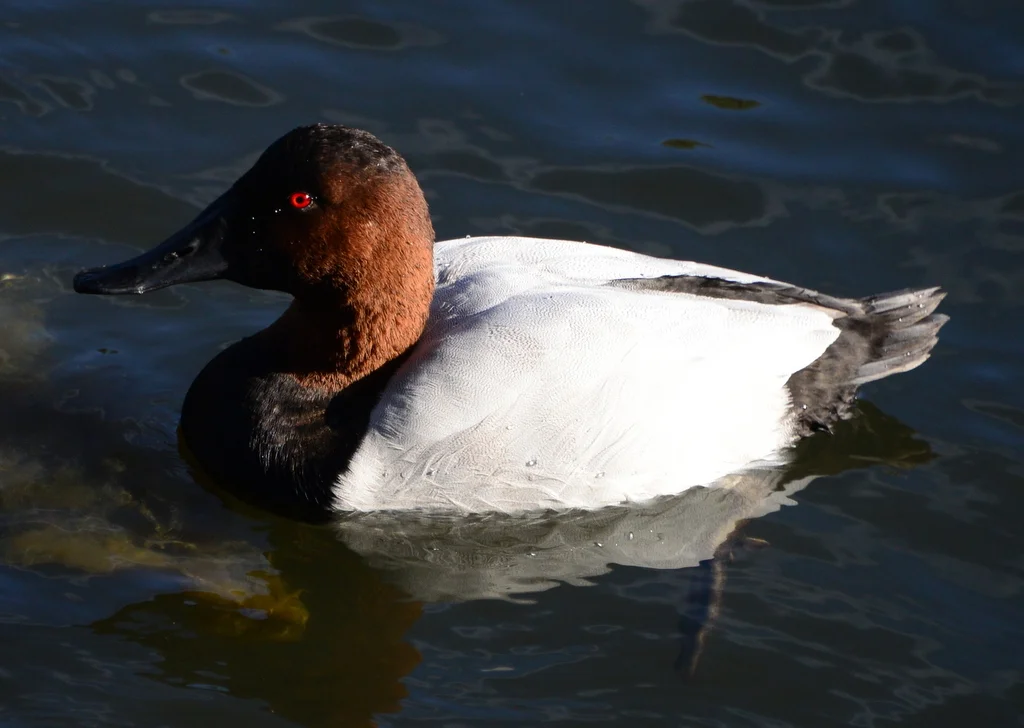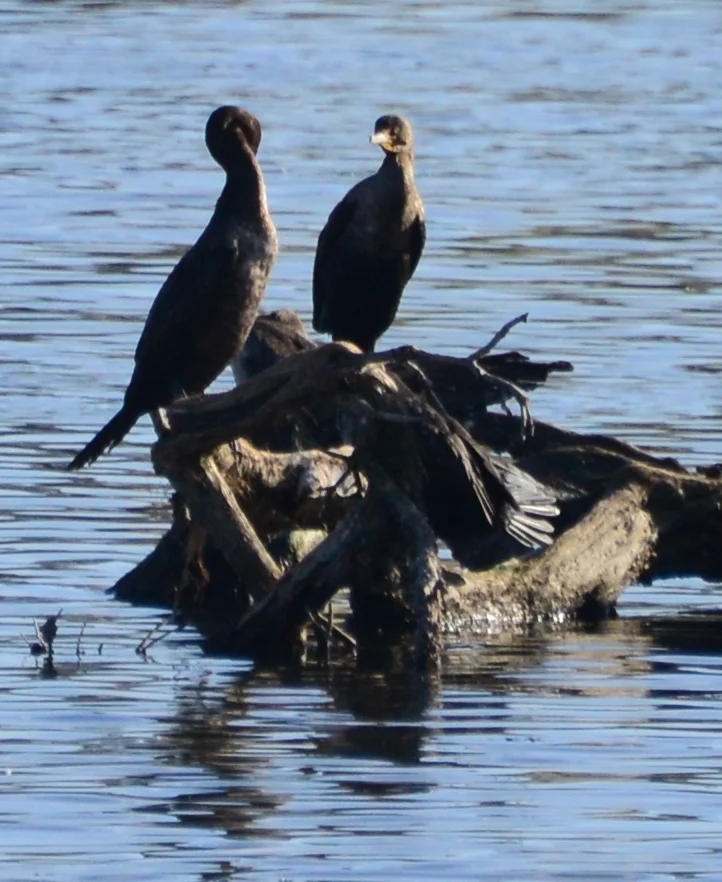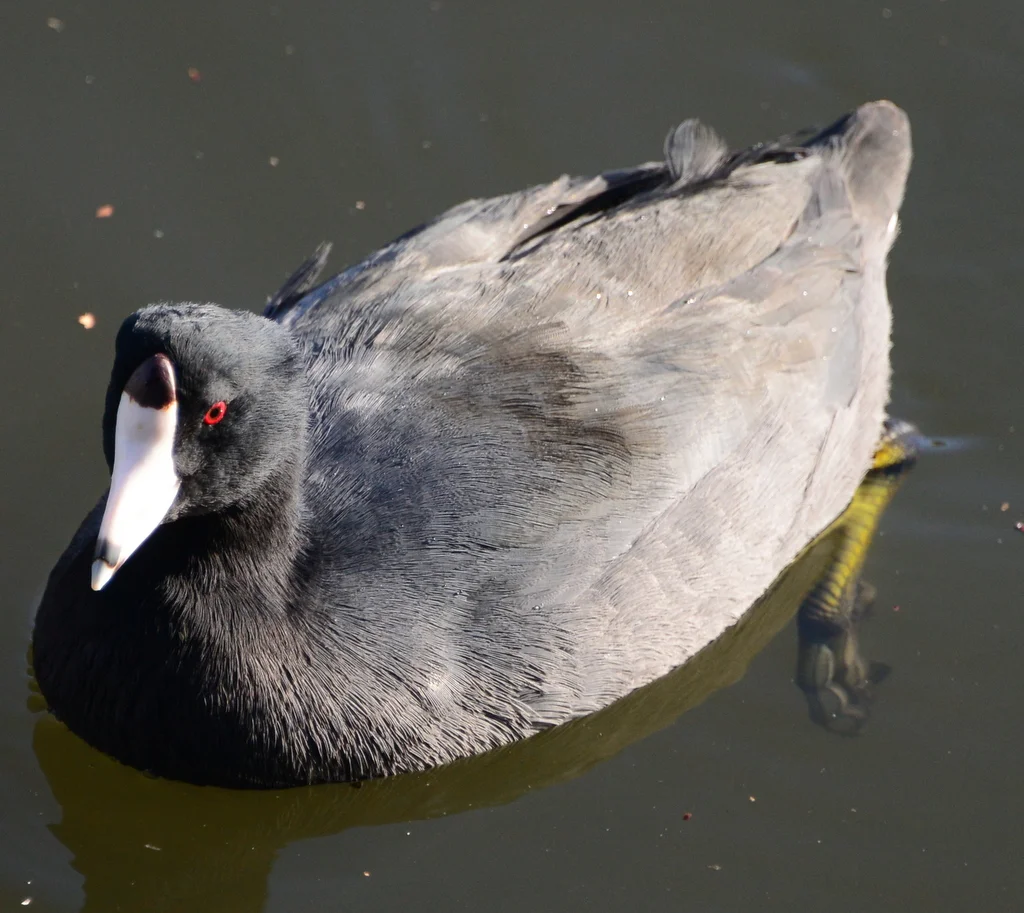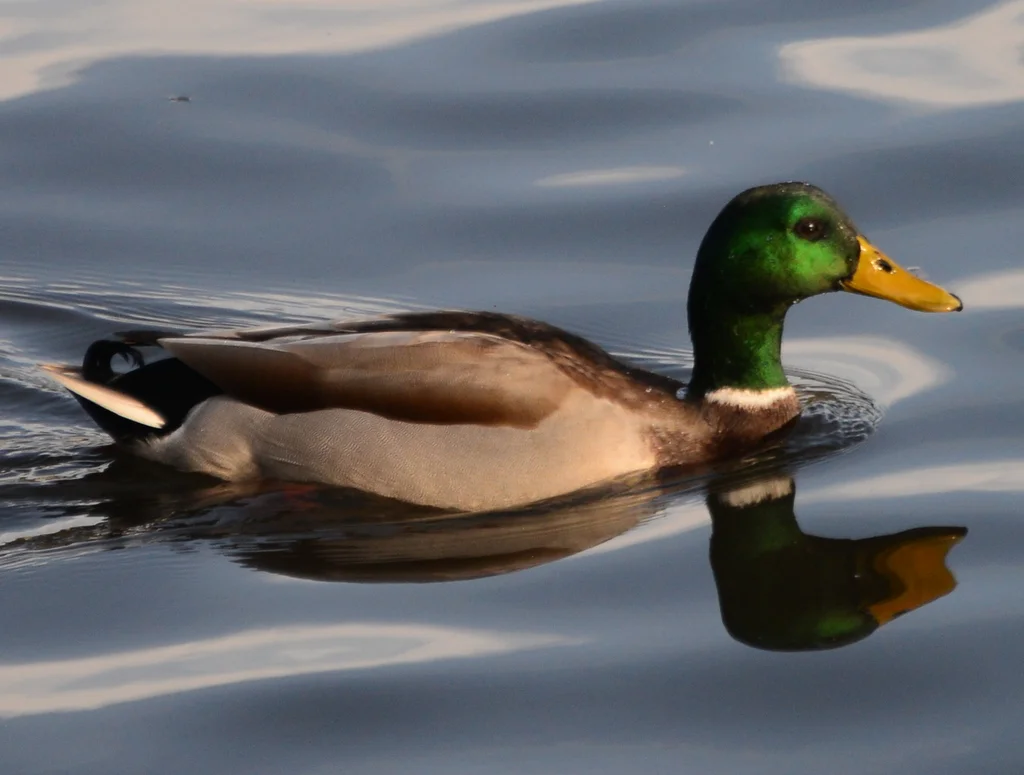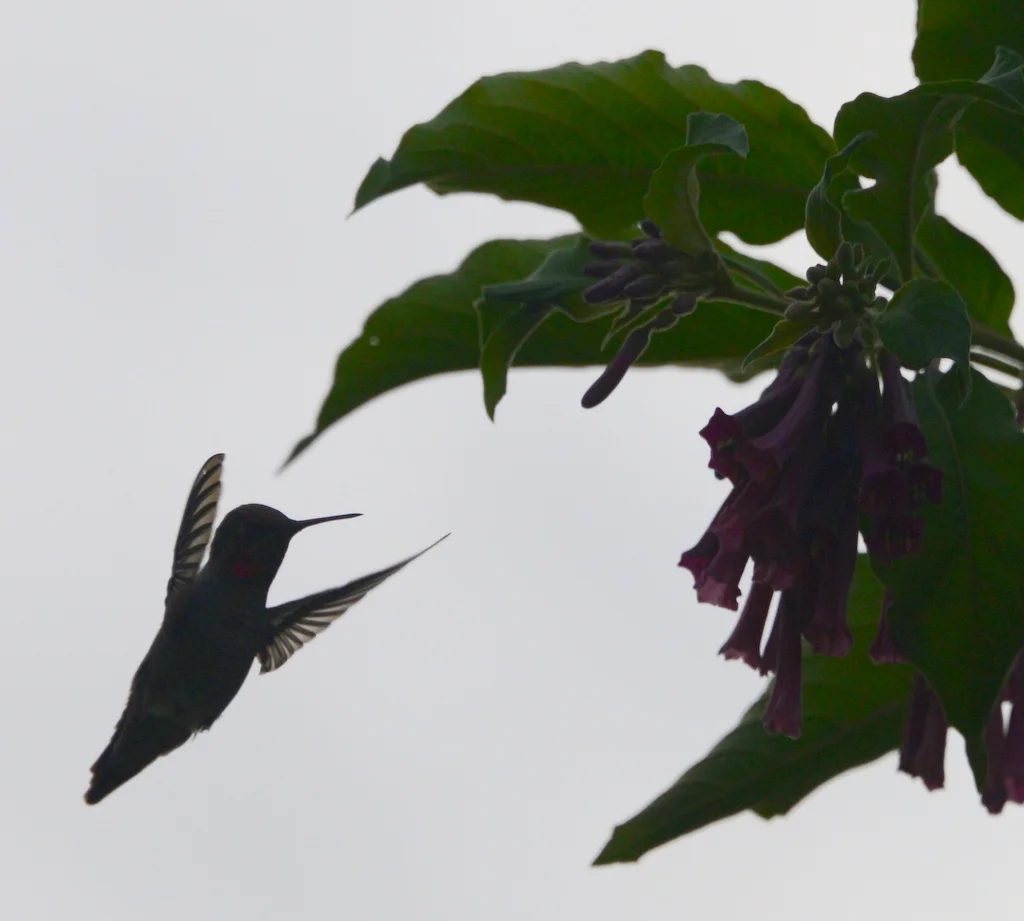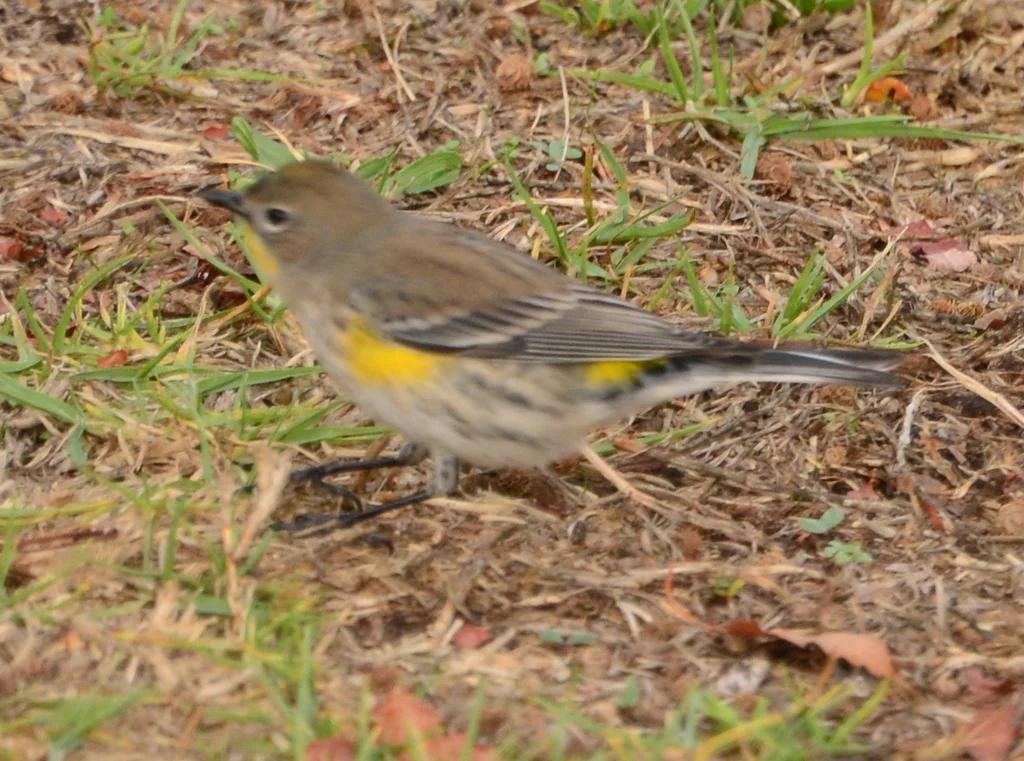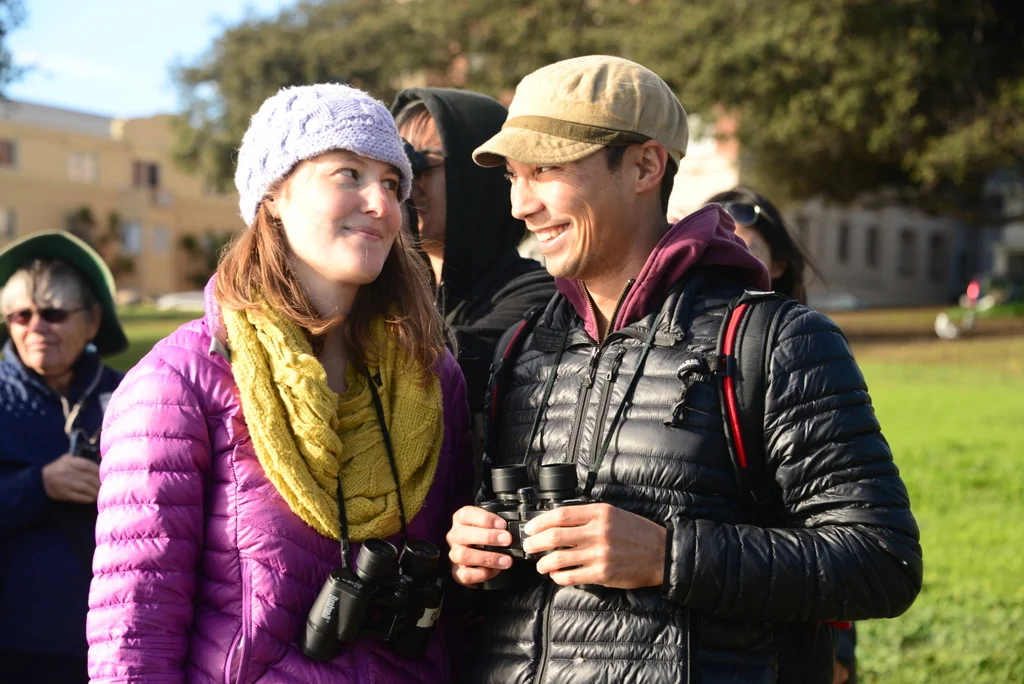The Birds Are Back in Town - Lake Merritt Edition
/A wall of feathers swooped up before the crowd as a flight of Rock Pigeons swam through the cool golden light of a mid-November afternoon like a frightened school of fish in the waters below. Constance Taylor, the event coordinator, instructed the onlookers to see if they could spot a raptor driving after the birds, as a juvenile Red-Shouldered Hawk has been reported recently in the area. On the two-hour beginning birder walk, around 30 different bird species were spied by nearly 40 participants on Lake Merritt’s waters and in the gardens.
The afternoon was kick-started with a table displaying of some of the invertebrates that entice migrating birds to return to Lake Merritt year after year. The display included three different types of tunicates, an oriental shrimp, skeleton shrimp, Japanese bubble snail, some polychaetes and a very unique flatworm. After lead naturalist Tony Iwane walked the group through the use of provided binoculars, they were quickly trained on a Black-Crowned Night Heron staring down on the crowd in front of the Rotary Nature Center.
At the bird observation deck a juvenile Black-crowned Night Heron was spotted, its speckled feathers looking very little like the dressed-up adult bird. Floating in the water were American Coots, busy chasing each other with a few Lesser Scaup and a Canvasback floating in between them. The American Coot has free toes, unlike the webbed feet of ducks, which make it easy for it to navigate walking on land. The male Lesser Scaup, a diving duck, has a bluish bill shaped like a scoop mounted on a green head with an unflinching yellow eye. The female is not as flashy, mainly shades of brown, and has a white rim of feathers around the beak.
As the birders moved east along the lake's shore, they spotted a group of one of North America's largest birds, the American White Pelican. Close by were Double-crested Cormorants preening themselves. Both birds chase fish in the lake, but in radically different ways. Pelicans feed on the surface and often in groups, coordinating their swimming and bobbing to drive fish towards the shallows. Cormorants attack fish beneath the surface. Their heavy boned body, lightly oiled feathers and snake-like necks make them excellent underwater swimmers. They are often seen with their black wings outstretched because their feathers get wet when they dive. Cormorants nest on the bird islands, and their colony is responsible for defecating to death most of the plants on their island, including the tree that contains their nests.
Tony joked that the easiest way to identify a grebe is by its elusive nature: it will dive as soon as you look at it. Sure enough, the cute little Eared Grebes and the Pied-Billed Grebes dove as soon a binoculars started to train on them. A pair of Western Grebes was also spotted, but because of wind they seemed to keep their slender necks tucked up tight. Tony also mentioned that knowing a bird by its silhouette can be helpful glare can often obscure colors. A prime example of identification by silhouette was the Ruddy Ducks spotted rafting on the eastern arm of the lake. Their “Dennis the Menace” styled tail feathers shooting out this way and that made them easy to differentiate from the other ducks.
Before heading back towards the gardens, the group was lucky enough to spy three Buffleheads cruising along just beyond the rafting birds. Their huge white heads made them easy to spot at a distance. That head isn't all feathers - Buffleheads have large skulls for a duck, and the interesting habit of nesting in old woodpecker homes. A Great Blue Heron, a Snowy Egret and a Great Egret all showed up by the bird deck as the group headed to the gardens.
Inside the gardens the terrain is much different than the lake, and provides many hiding spots for smaller birds. Within moments of entering the gardens, a pair of territorial Anna's Hummingbirds put on quite a show. The males make a large swoop in the air punctuated with a loud chirp-like sound caused by the force of air over their tail feathers, and use this behavior to assert territory. A Bewick's Wren was spotted popping in and out of a hedge, and Yellow-rumped Warblers seemed to scamper about in most open spaces. The real winged treat in the garden wasn't a bird, but a cluster of monarchs aggregating on the branches of a Dawn Redwood. The monarchs have been actively cultivated in the gardens by the Pollinator Posse, and milkweed is planted throughout to help their striped caterpillars feed.
On the way back to the Rotary Nature Center the group got one last bonus as a pair of Western Bluebirds caught some of the final warm rays upon a light post, along with some very friendly House Finches. A debrief of all of the birds can be seen on iNaturalist.org.
-Damon Tighe


